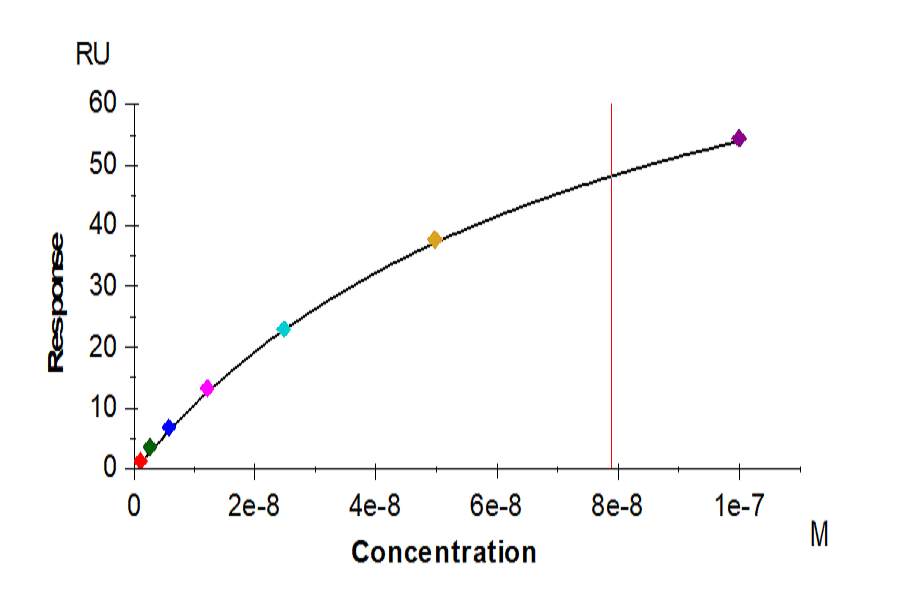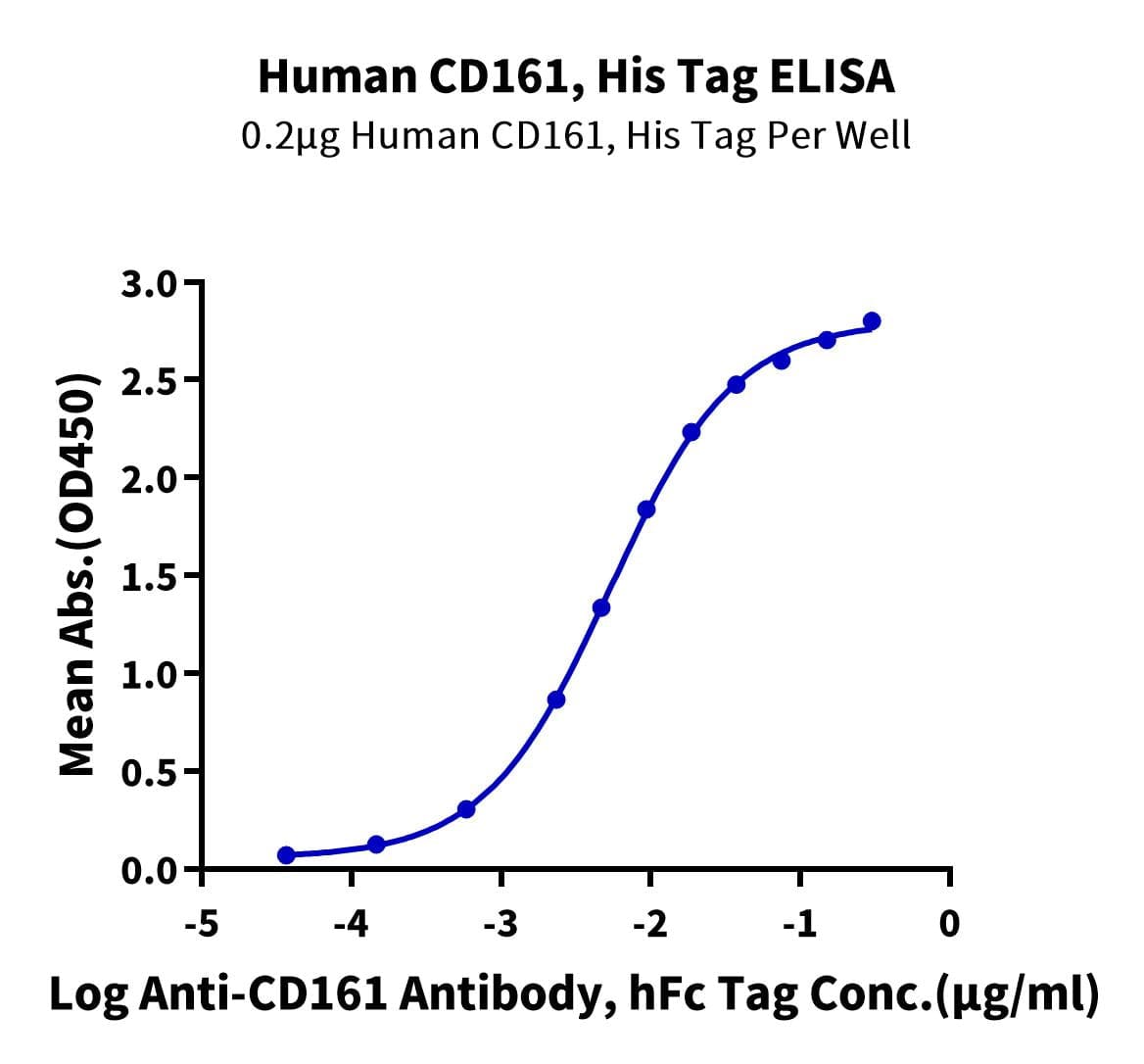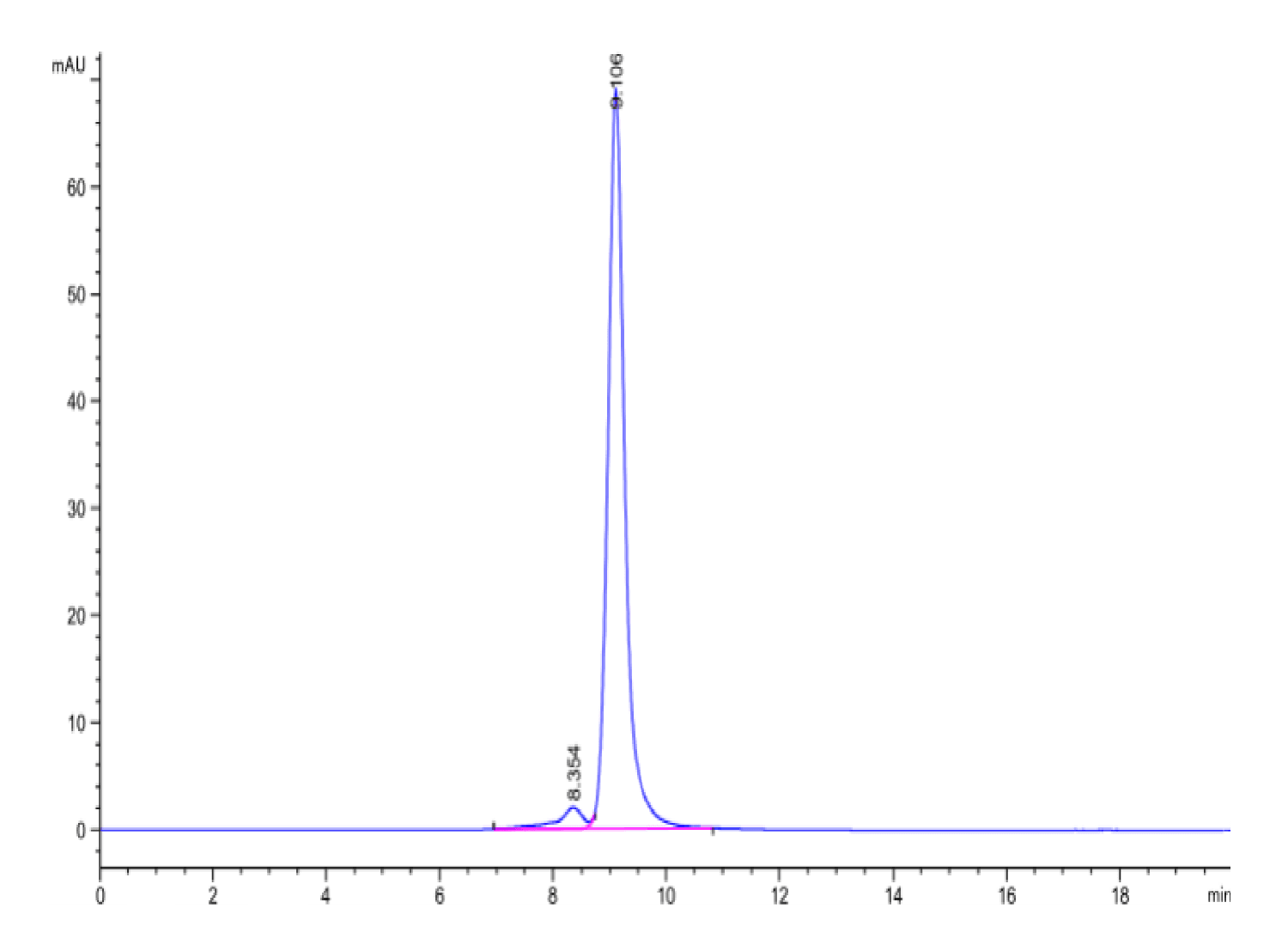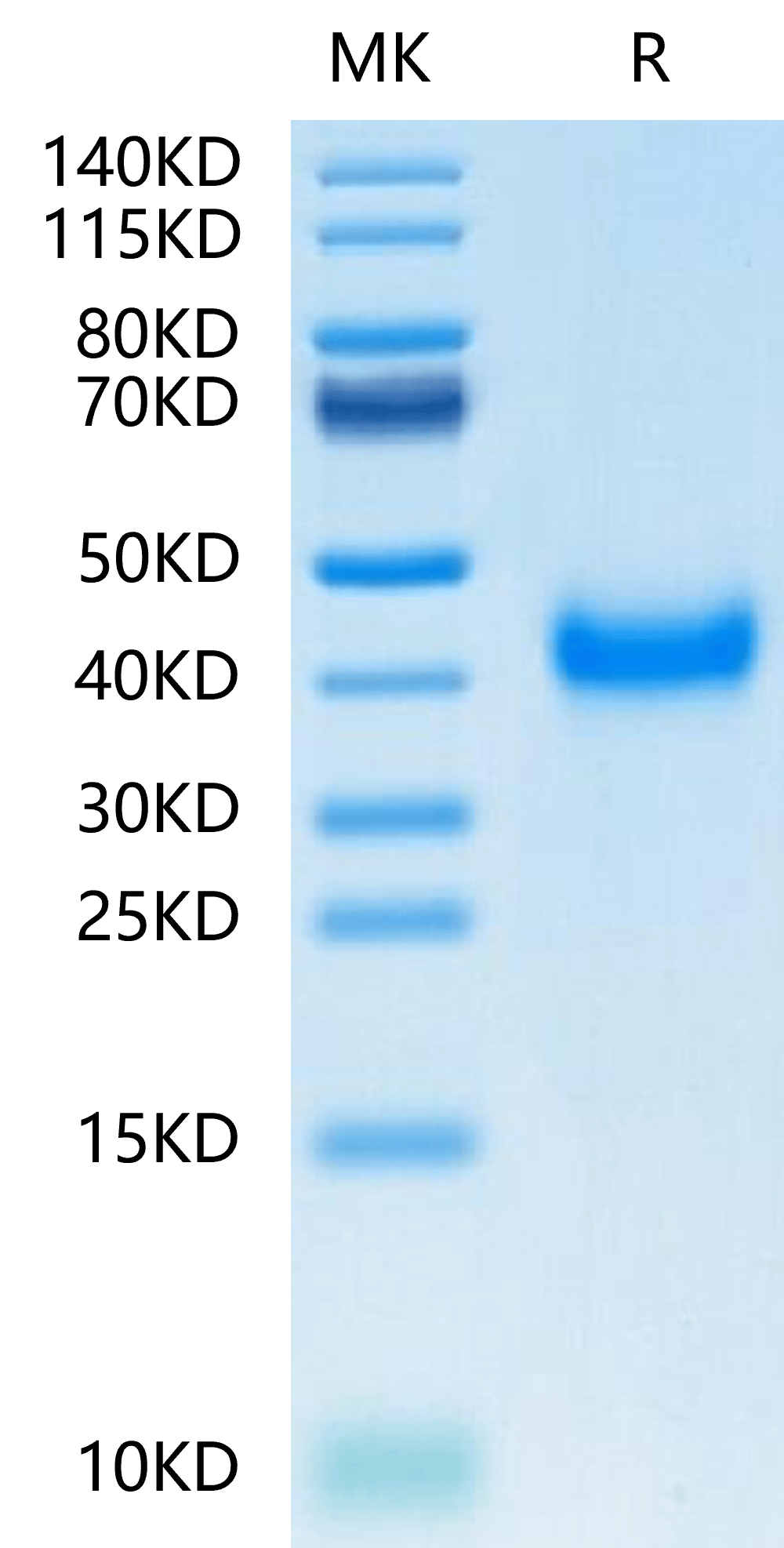| Weight | 1 lbs |
|---|---|
| Dimensions | 9 × 5 × 2 in |
| accession | Q12918 |
| express system | HEK293 |
| product tag | C-His |
| purity | > 95% as determined by Tris-Bis PAGE;> 95% as determined by HPLC |
| background | CD161 (NKRP1) is a lectin-like receptor present on NK cells and rare T-cell subsets. We have observed CD161 expression in some cases of T-cell prolymphocytic leukemia (T-PLL) and found it to be useful in follow-up and detection of disease after treatment. |
| molecular weight | The protein has a predicted MW of 19.6 kDa. Due to glycosylation, the protein migrates to 38-45 kDa based on Tris-Bis PAGE result. |
| available size | 100 µg, 500 µg |
| endotoxin | Less than 1EU per μg by the LAL method. |
Human CD161 Protein 3898
$345.00 – $1,150.00
Summary
- Expression: HEK293
- Functional: Yes (ELISA)
- Amino Acid Range: Gln67-Ser225
Human CD161 Protein 3898
| protein |
|---|
| Size and concentration 100, 500µg and lyophilized |
| Form Lyophilized |
| Storage Instructions Valid for 12 months from date of receipt when stored at -80°C. Recommend to aliquot the protein into smaller quantities for optimal storage. Please minimize freeze-thaw cycles. |
| Storage buffer Shipped at ambient temperature. |
| Purity > 95% as determined by Tris-Bis PAGE |
| target relevance |
|---|
| CD161 (NKRP1) is a lectin-like receptor present on NK cells and rare T-cell subsets. We have observed CD161 expression in some cases of T-cell prolymphocytic leukemia (T-PLL) and found it to be useful in follow-up and detection of disease after treatment. |
| Protein names Killer cell lectin-like receptor subfamily B member 1 (C-type lectin domain family 5 member B) (HNKR-P1a) (NKR-P1A) (Natural killer cell surface protein P1A) (CD antigen CD161) |
| Protein family 349 |
| Function Plays an inhibitory role on natural killer (NK) cells cytotoxicity. Activation results in specific acid sphingomyelinase/SMPD1 stimulation with subsequent marked elevation of intracellular ceramide. Activation also leads to AKT1/PKB and RPS6KA1/RSK1 kinases stimulation as well as markedly enhanced T-cell proliferation induced by anti-CD3. Acts as a lectin that binds to the terminal carbohydrate Gal-alpha(1,3)Gal epitope as well as to the N-acetyllactosamine epitope. Binds also to CLEC2D/LLT1 as a ligand and inhibits NK cell-mediated cytotoxicity as well as interferon-gamma secretion in target cells. |
| Pathway 243 |
| Subellular location Membrane ; Single-pass type II membrane protein . |
| Tissues Expressed in a subset of NK cells predominantly in intestinal epithelium and liver. Detected in peripheral blood T-cells and preferentially in adult T-cells with a memory antigenic phenotype. |
| Structure Homodimer; disulfide-linked. Interacts with acid sphingomyelinase/SMPD1. |
| Post-translational modification N-glycosylated. Contains sialic acid residues. |
| Target Relevance information above includes information from UniProt accession: Q12918 |
| The UniProt Consortium |
Data
Publications
Publications
| pmid | title | authors | citation |
|---|---|---|---|
| We haven't added any publications to our database yet. | |||
Protocols
| relevant to this product |
|---|
Documents
| # | ||
|---|---|---|
| Please enter your product and batch number here to retrieve product datasheet, SDS, and QC information. | ||


















